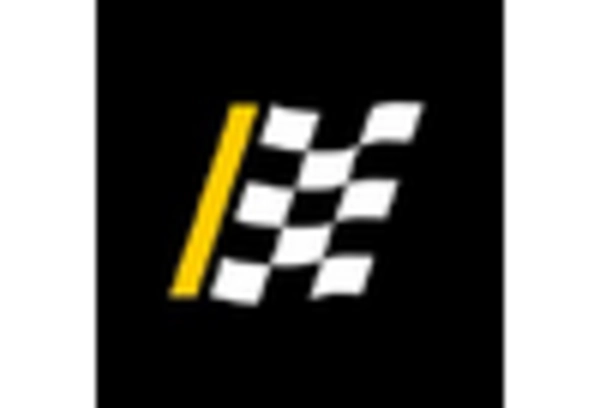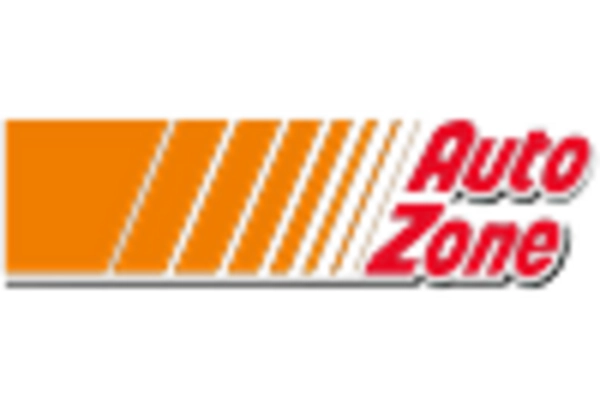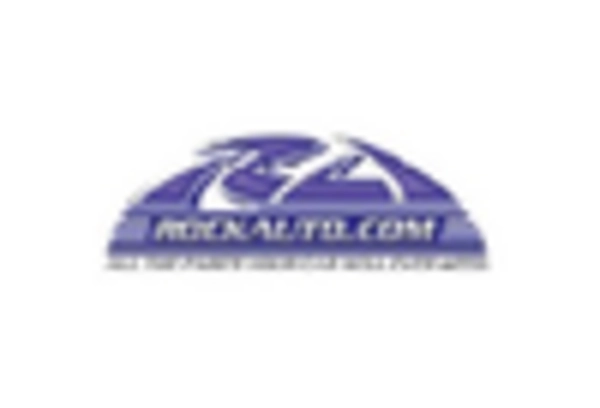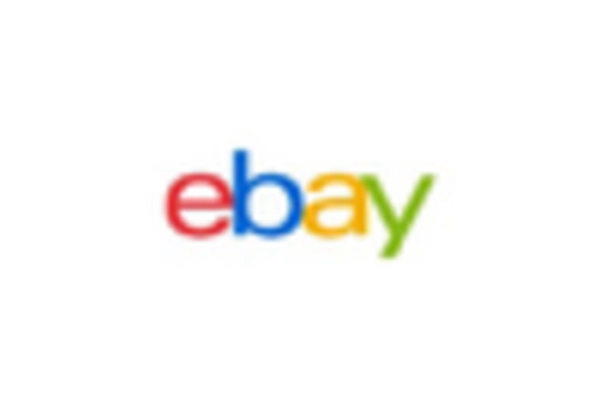Rising Consumer Demand for Convenience
The Automotive E-Commerce Component Market is experiencing a notable surge in consumer demand for convenience. As consumers increasingly prefer online shopping for automotive parts and accessories, the industry is adapting to meet these expectations. A report indicates that approximately 70% of consumers now prefer to shop online for automotive components, driven by the ease of access and time-saving benefits. This shift towards e-commerce is compelling manufacturers and retailers to enhance their online platforms, ensuring a seamless shopping experience. The growing reliance on digital channels is likely to reshape the competitive landscape, as businesses that effectively leverage e-commerce strategies may gain a significant advantage in the Automotive E-Commerce Component Market.
Advancements in Digital Payment Solutions
The Automotive E-Commerce Component Market is witnessing a transformation due to advancements in digital payment solutions. The integration of secure and efficient payment methods, such as mobile wallets and cryptocurrency, is facilitating smoother transactions for consumers. Data suggests that the adoption of digital payment systems has increased by over 50% in the automotive sector, reflecting a broader trend towards cashless transactions. This evolution not only enhances consumer confidence but also streamlines the purchasing process, making it more appealing for customers to engage in e-commerce. As payment technologies continue to evolve, they are likely to play a pivotal role in shaping the future of the Automotive E-Commerce Component Market.
Growing Popularity of Online Marketplaces
The Automotive E-Commerce Component Market is experiencing a shift towards online marketplaces, which are becoming increasingly popular among consumers. These platforms offer a wide range of automotive components from various suppliers, providing consumers with more choices and competitive pricing. Data shows that online marketplaces account for nearly 40% of total e-commerce sales in the automotive sector, highlighting their significance in the market. This trend is encouraging manufacturers and retailers to partner with established online marketplaces to expand their reach and visibility. As the popularity of these platforms continues to rise, they are likely to play a crucial role in the evolution of the Automotive E-Commerce Component Market.
Increased Investment in E-Commerce Infrastructure
The Automotive E-Commerce Component Market is benefiting from increased investment in e-commerce infrastructure. Companies are allocating substantial resources to enhance their online platforms, logistics, and customer service capabilities. Recent data indicates that investments in e-commerce infrastructure have grown by approximately 30% over the past year, as businesses recognize the importance of a robust online presence. This influx of capital is enabling companies to improve their website functionalities, optimize supply chains, and enhance customer engagement strategies. As a result, the Automotive E-Commerce Component Market is likely to see improved operational efficiencies and customer satisfaction, fostering further growth.
Emphasis on Customer Experience and Personalization
The Automotive E-Commerce Component Market is placing a strong emphasis on enhancing customer experience and personalization. Companies are increasingly utilizing data analytics to understand consumer preferences and tailor their offerings accordingly. Research indicates that personalized marketing strategies can lead to a 20% increase in conversion rates, underscoring the importance of customer-centric approaches. By focusing on delivering a more personalized shopping experience, businesses can foster customer loyalty and drive repeat purchases. This trend towards personalization is expected to shape the future of the Automotive E-Commerce Component Market, as companies strive to differentiate themselves in a competitive landscape.


















Leave a Comment